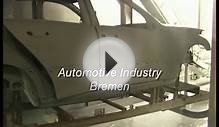
A recent article shared with me by a co-worker reminded me of a situation looming over the auto repair industry that could become a real problem over the next few years. Skilled automotive technicians are becoming harder and harder to find.
I am not talking about technicians who change your oil and perform other minor repairs. I am talking about the highly skilled technicians who diagnose and repair the most difficult problems. These technicians understand the basic mechanical theory behind each automotive system, the computer controls that now manage each of these systems, and the electronic network that links them all together.
Over the past few years, many of these highly skilled technicians have left the industry; those who remain will be retiring sooner than later. If I may be so bold ( Editor’s note: he should be so bold; he’s awesome.), I would like to include myself as a highly skilled technician who has left the industry, as have most of the best technicians I have worked with over the years. It can take ten years or more for a technician fresh out of trade school to begin to really understand the complexities of our modern automobiles—most never do. Highly skilled technicians are just not being replaced as quickly as they are leaving.
One way to help stem the tide is to keep the current group in the 45–60 age range working on cars until they retire, instead of having them get fed up and leave the industry as I and many others have done. So what is driving these highly skilled technicians out of the repair business and into other fields? It’s simple—compensation and working conditions.
I realize that times are tough and everyone has been asked to do more for less pay, but this started in the automotive repair industry many years before our recent recession worsened the problem.
In most cases, technicians are paid using what is called a “flat rate” system. This system is based on the suggested labor times for each specific job. These “flat rate” times are developed by the manufacturers and then adjusted (slightly higher) for the independent repair shops. This means the technician is paid based on the hours billed to the customer for the jobs he worked on.
The technician is paid for each “flat rate” hour produced regardless of how long it takes to do the job. If the technician beats the time, she comes out ahead. If he takes longer, there is no compensation for the extra time.
Some shops take this to the extreme. When there is no work in the shop, there is no pay. Up until about the year 2000, when shops were busy, most technicians could break even or come out ahead under this system. As a way to cut costs, many manufacturers and shop owners began to reduce the “flat rate” time on many repairs. As a result, it has become much more difficult to come out ahead when performing difficult diagnostics and repairs that most skilled technicians commonly do. This situation has negatively impacted the compensation and working conditions for just about every auto repair technician.
According to information available from the U.S. Bureau of Labor and Statistics, since 2003, the average salary for auto repair technicians has not kept pace with the Consumer Price Index or the average salary many other skilled trades:
Percentage Increase 2003–2011
Consumer price index 23.14%
Average Salary for:
Auto Repair Technician: 15.73%
Truck and Bus Technician: 18.80%
More:
- Trying to find Limo Service in Rockland County NY nycairportslimo ? Check out this page: http://www.nycairportslimo.com
RELATED VIDEO












